#Princess Sophia of Prussia
Explore tagged Tumblr posts
Text
𝙲𝚑𝚘𝚌𝚘𝚕𝚊𝚝𝚎 𝚌𝚊𝚛𝚍𝚜 𝚘𝚏 𝚁𝚘𝚢𝚊𝚕 𝚠𝚘𝚖𝚎𝚗 👑✨🍫
(𝙿𝚊𝚛𝚝 𝟸 𝚘𝚞𝚝 𝚘𝚏 𝟺)
~~~~~~~~~~~~~~~~~~~~~~~~~~~~~~~~~~~~~~~~~~~~~~~
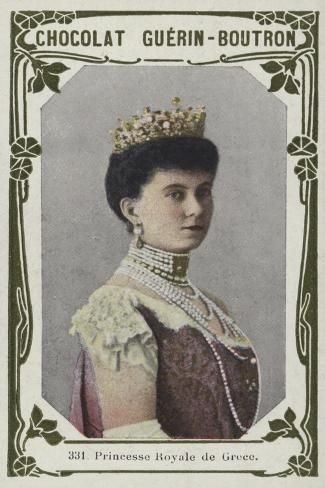
Queen Sophia of Greece, née Princess Sophia of Prussia.
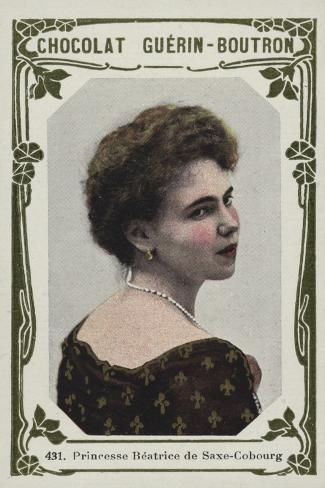
Princess Beatrice, Duchess of Galliera, née Princess Beatrice of Edinburgh.
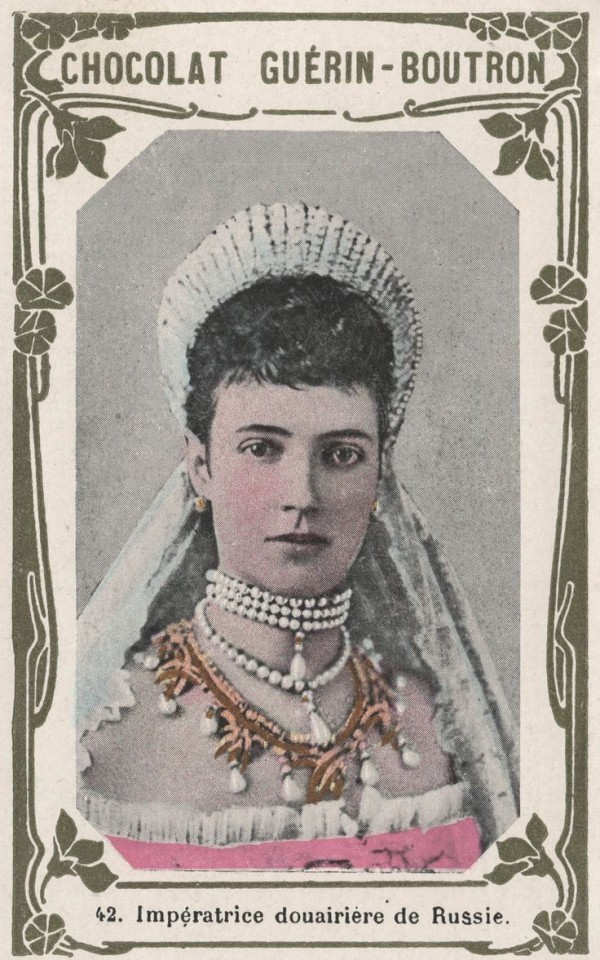
Empress Maria Feodorovna, née Princess Dagmar of Denmark.
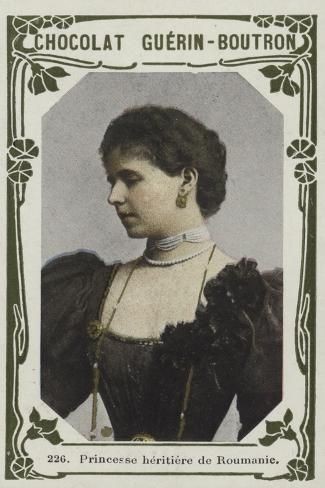
Queen Marie of Romania, née Princess Marie of Edinburgh.
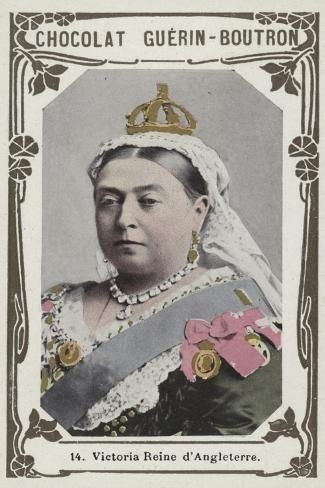
Queen Victoria, née Princess Alexandrina Victoria of Kent.
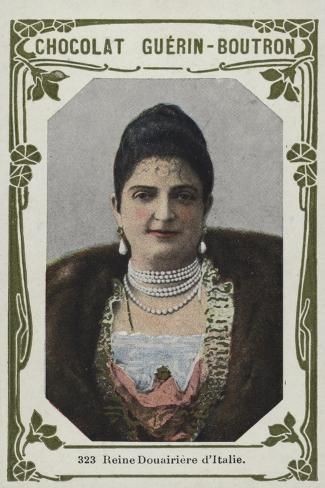
Queen Margherita of Italy, née Princess Margherita of Savoy.
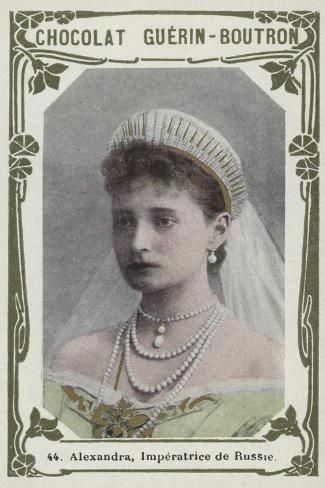
Empress Alexandra Feodorovna, née Princess Alix of Hesse.

Princess Louise of Schaumburg-Lippe, née Princess Louise of Denmark.
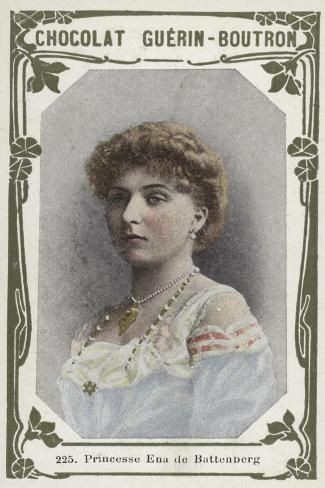
Queen Victoria Eugenie of Spain, née Princess Victoria Eugenie of Battenberg.
#queen sophia of greece#princess sophia of prussia#princess beatrice of edinburgh#duchess of galliera#empress maria feodorovna#dagmar of denmark#queen marie of romania#princess marie of edinburgh#queen victoria#queen margherita of italy#margherita of savoy#empress alexandra feodorovna#alix of hesse#princess louise of denmark#princess louise of schaumburg-lippe#queen victoria eugenie of spain#princess victoria eugenie of battenberg#chocolate cards
25 notes
·
View notes
Text
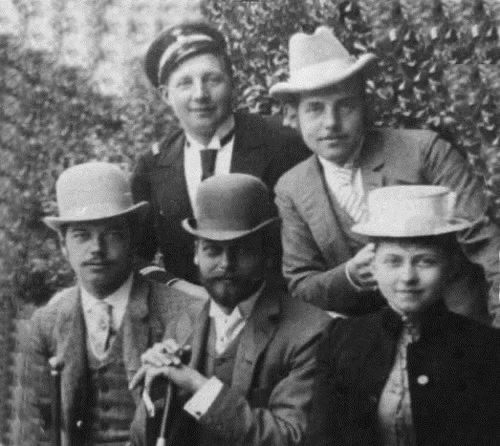
Tsesarevich Nicholas, Prince George of Wales, Princess Sophia of Prussia, Crown Prince Constantine of Greece and Prince George of Greece and Denmark 1890s.
#Tsesarevich Nicholas#prince george of wales#Princess Sophia of Prussia#crown Prince Constantine#George of Greece and Denmark#nicholas ii#George v#Queen sophia of Greece#Constantine i#1890s
38 notes
·
View notes
Photo
She looks so angelic 🥹🤍🪽

Princess Sophia of Prussia - Queen consort of King Constantine I of Greece, ca. 1890.
64 notes
·
View notes
Text

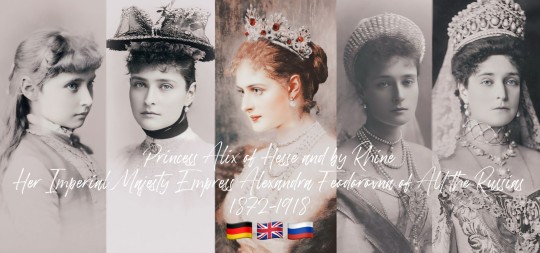
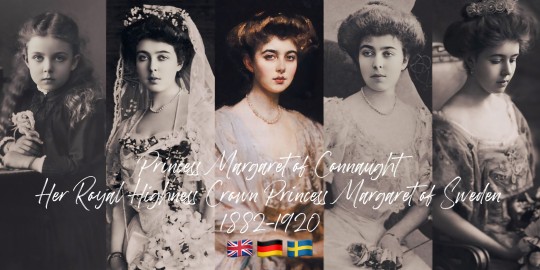
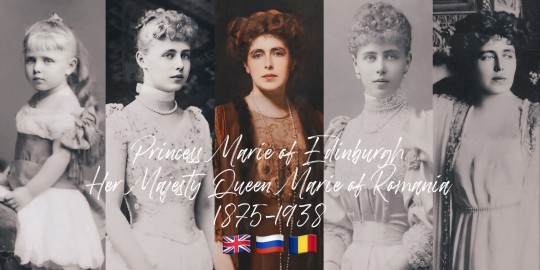

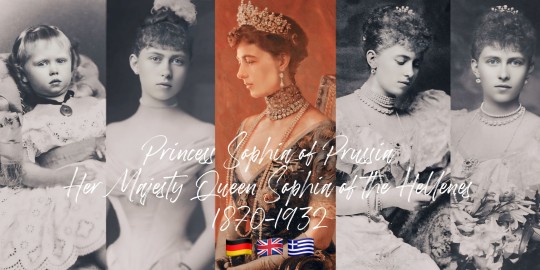
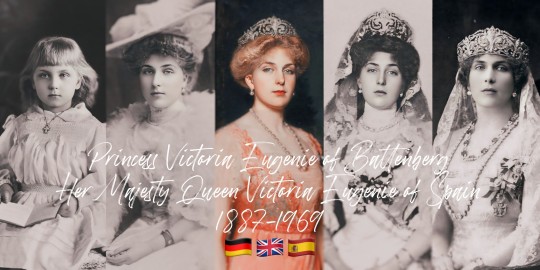
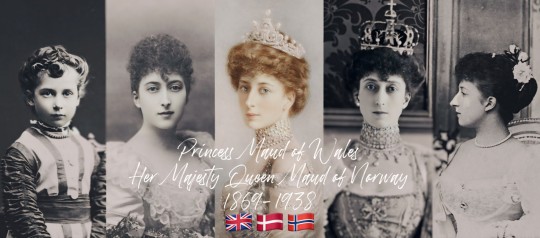
"The Monarchs of Queen Victoria’s Legacy"
Wilhelm II was the first of Queen Victoria's grandchildren to ascend to a throne, becoming German Emperor in 1888. His reign initiated the lineage of monarchs descended from Victoria. The last to be crowned was Marie of Romania in 1914, marking the end of an era for Victoria's royal progeny.
Queen Maud of Norway holds the distinction of having the longest tenure as Queen Consort among Queen Victoria's grandchildren, with a reign that spanned 33 years. Her time on the throne was characterized by a harmonious blend of British heritage and Norwegian culture, leaving a legacy of benevolence and cultural patronage. Conversely, Queen Sophia's role as Queen Consort of the Hellenes was the briefest, lasting just about 4 years due to the political upheavals of World War I and Greece's National Schism, which led to her husband's abdication. Despite the short span, her resilience and dedication to her royal duties remained unwavering.
The execution of Empress Alexandra Feodorovna was a deeply tragic event, reflecting the brutal reality of the Russian Revolution. On the night of 16-17 July 1918, she and her family were executed by Bolshevik revolutionaries in Yekaterinburg. Alexandra witnessed the murder of her husband, Tsar Nicholas II, before she herself was killed with a gunshot to the head. The violence of that night brought an abrupt and grim end to the Romanov dynasty, extinguishing the lives of the last imperial family of Russia in a stark and merciless manner. Her death marked the first among Queen Victoria’s crowned grandchildren. In contrast, Queen Victoria Eugenie of Spain lived through the upheavals of the 20th century, witnessing the restoration of the Spanish monarchy. She passed away in 1969, the last of Victoria’s crowned grandchildren, her life reflecting the dramatic changes of her time.
George V’s United Kingdom, a realm where tradition blends with modernity, continues to stand firm. The monarchy, a symbol of continuity, has weathered the storms of change, its crown passed down through generations, still reigning with a sense of duty and connection to the people.
Maud of Norway’s legacy endures in the serene beauty of Norway, where the monarchy remains a cherished institution. Her reign, characterized by a quiet strength and a nurturing presence, is remembered fondly, and the royal house she helped establish continues to flourish.
Margaret of Connaught’s Swedish monarchy, into which she married, stands resilient. Though she never became queen, her descendants uphold the traditions and values she embodied, maintaining the monarchy as a pillar of Swedish national identity.
Victoria Eugenie of Spain saw the Spanish monarchy navigate the tumultuous waters of the 20th century, enduring a republic and a dictatorship before being restored. Today, it stands as a testament to resilience, with her bloodline still on the throne, embodying the spirit of reconciliation and progress.
In stark contrast, the fates of other monarchies were marked by tragedy:
Wilhelm II witnessed the fall of his German Empire in the aftermath of World War I. His abdication marked the end of an era, and he spent his remaining years in exile, a once-mighty emperor without a throne, reflecting on the lost glory of his realm.
Sophia of Hellenes experienced the disintegration of the Kingdom of Greece amidst political upheaval. The monarchy, once a symbol of national unity, was abolished, leaving her and her family to face the harsh reality of a world that had moved beyond the age of empires.
Alexandra Feodorovna’s Russian Empire crumbled during the Bolshevik Revolution. The tragic end of the Romanov dynasty saw her and her family executed, their fates sealed by the tides of revolution that swept away centuries of monarchical rule.
Marie of Romania’s kingdom, once a beacon of hope in the aftermath of World War I, eventually succumbed to the forces of history. The monarchy was abolished after World War II, and the royal family faced the stark reality of a republic.
#wilhelm ii#Marie of Edinburgh#Marie of romania#George v#alix of hesse#alexandra feodorovna#Margaret of connaught#Margaret of Sweden#Victoria eugenie of Spain#Sophia of Prussia#Sophia of Hellenes#Sophia of greece#queen maud#princess maud of wales#Victoria eugenie of battenberg
47 notes
·
View notes
Text

Frederica, Princess Royal of Prussia, Shortly to be Duchess of York, Presented to King George III
Artist: Richard Livesay (British, 1750-1826)
Date: 1791
Medium: Oil on canvas
Collection: Royal Collection Trust, United Kingdom
Description
Frederica was the eldest daughter of Frederick William II, King of Prussia. Her marriage to the Duke of York, George III’s second son, took place on 29 September 1791. The scene is set in an entrance hall, with the King and Queen standing in the centre. The Duke of York, sponsoring the introduction, is seen advancing from the right. The King is surrounded by the Princesses, and to the right are shown the Prince of Wales (next to the Queen) and the Duke of Clarence.
#group portrait#painting#fine art#oil on canvas#frederica of prussia#king george iii#interior#entrance hall#narrative art#frederick william ii#king of prussia#princesses#prince of wales#duke of clarence#king george iv#prince frederick augustus#princess augusta sophia#queen charlotte#princess frederica charlotte#princess mary#princess amelia#princess sophia matilda#princess elizabeth#british history#rihard livesay#british painter#artwork#british culture#british art#european art
10 notes
·
View notes
Text
THIS DAY IN GAY HISTORY
based on: The White Crane Institute's 'Gay Wisdom', Gay Birthdays, Gay For Today, Famous GLBT, glbt-Gay Encylopedia, Today in Gay History, Wikipedia, and more … December 14



c.530 – Venantius Fortunatus (d.circa 600/609) was a Latin poet and hymnodist in the Merovingian Court, and a Bishop of the early Catholic Church. He was never canonised but was venerated as Saint Venantius Fortunatus during the Middle Ages.
Born in Treviso, near Ravenna in Italy, he spent his time as court poet to the Merovingians. After visiting the tomb of St. Martin of Tours at St. Hilary at Poitiers, he decided to enter a monastery.
He continued to write poetry, some of which have a permanent place in Catholic hymnody, for instance the Easter season hymns "Vexilla Regis" and the "Pange Lingua" (Sing, O my tongue, of the battle). Three or four years before he died he was made bishop of Poitiers. Although never canonized, he was venerated as a saint in the medieval church, and his feast day is still recognized on 14th December each year.
Like Paulinus of Nola, St Venantius's poetry also includes some decidedly secular verse of the romantic sort. That this celebrates male love is clear from its inclusion in the Penguin Book of Homosexual Verse.
"Written on an Island off the Breton Coast" You at God's altar stand, His minister And Paris lies about you and the Seine: Around this Breton isle the Ocean swells, Deep water and one love between us twain. Wild is the wind, but still thy name is spoken; Rough is the sea: it sweeps not o'er they face. Still runs my lover for shelter to its dwelling, Hither, O heart, to thine abiding place. Swift as the waves beneath an east wind breaking Dark as beneath a winter sky the sea, So to my heart crowd memories awaking, So dark, O love, my spirit without thee.
Fortunatus died in the early 600s. He was called a saint after his death, but was never formally canonized.


1901 – King Paul of Greece (d.1964) reigned as king of Greece from 1947 to 1964. He may have been bi-sexual.
Paul was born in Athens, the third son of King Constantine I of Greece and his wife, Princess Sophia of Prussia. He was trained as a naval officer. On 9 January 1938, Paul married Frederika of Hanover at Athens. They had three children.
Before his marriage he is alleged to have invited the homosexual literary muse, Denham Fouts, on a cruise of the Aegean Sea, perhaps because they were lovers. However, Fouts's friend John B. L. Goodwin said Fouts often made up stories about his life, and literary critic Katherine Bucknell thought many of the tales about him were myth.
During most of World War II, when Greece was under German occupation, he was with the Greek government-in-exile in London and Cairo. From Cairo, he broadcast messages to the Greek people.
Paul returned to Greece in 1946. He succeeded to the throne in 1947, on the death of his childless elder brother, King George II.


David Lewis (L) with Producer Irving Pichel
1903 – David Lewis (d.1987 ), born David Levy, was a Hollywood film producer who produced such films as Dark Victory (1939), Arch of Triumph (1948), and Raintree County (1957).
He was also the longtime companion of director James Whale from 1930 to 1952. Although they were separated at the time of Whale's death in 1957, Lewis later released the contents of Whale's suicide note.
Lewis was portrayed in the 1998 film Gods and Monsters by David Dukes.


1915 – The American actor and dancer Dan Dailey was born on this date (d.1978). Dailey was born and raised in New York City and appeared in vaudeville before his Broadway debut in 1937 in Babes in Arms. In 1940, he was signed by MGM to make movies and, although his past career had been in musicals, he was initially cast as a Nazi in The Mortal Storm. However, the people at MGM realized their mistake quickly and cast him in a series of musical films.
He served in the United States Army during World War II, was commissioned as an Army Officer after graduation from Signal OCS at Ft Monmouth, NJ, after which he served with distinction until the war ended. Then returned to more musicals. Beginning with Mother Wore Tights (1947) Dailey became the frequent and favorite co-star of movie legend Betty Grable. His performance in their film When My Baby Smiles at Me in 1948 garnered him an Academy Award nomination for Best Actor. In 1950, he starred in A Ticket to Tomahawk, often noted as one of the first screen appearances of Marilyn Monroe, in a very small part as a dance-hall girl. In 1953, Dailey starred in Meet Me at the Fair. One of his notable roles was in There's No Business Like Show Business (1954) which featured Irving Berlin's music and also starred Ethel Merman, Marilyn Monroe, Donald O'Connor, and Johnnie Ray.
In 1950 the notorious "Confidential" Magazine (the National Enquirer of its day) printed a picture of him wearing female clothing. His studio, 20th Century Fox, rushed to repair the damage; gossip columnists were told that Dailey had simply been snapped on his way to a fancy dress party. But Andre Previn, the composer, tells in his biography No Minor Chords how Dailey turned up drunk and in female clothing for the press screening of It's Always Fair Weather in 1954. In the mid '70s, gossip columnist Joyce Haber was on television promoting a novel about Hollywood. Asked to dish some gossip, she mentioned that one of the top dancer-actors was a closet transvestite with a costly and beautiful wardrobe that many women would envy.
He had three failed marriages with women, but also was known to hang out in Gay bars. After the suicide of his only son, he was an embittered alcoholic. He died three years later, just after he playing boyfriend Clyde Tolson in (the unintentionally hilarious *and bad*) The Private Files of J.Edgar Hoover (1977). He appeared in over 60 films in his career.


1932 – George Furth (d.2008) was an American librettist, playwright, and actor.
Born in Chicago with the name of George Schweinfurth (he dropped the "schwein" on becoming an actor).
Furth made his Broadway debut as an actor in the 1961 play A Cook for Mr. General, followed by the musical Hot Spot two years later. He was also known for his collaborations with Stephen Sondheim: the highly successful Company, the ill-fated Merrily We Roll Along and the equally ill-fated drama, Getting Away with Murder. Furth penned the plays Twigs, The Supporting Cast and Precious Sons, and wrote the book for the Kander and Ebb musical, The Act.
Company has been revived many times over the years, sometimes updated to the Aids era, although requests from producers to give the show a homosexual slant were turned down by the unmarried Sondheim and Furth, although both of them were gay.
Frequently cast as a bespectacled, ineffectual milquetoast, Furth appeared in such films as The Best Man, Myra Breckinridge, Hooper, Blazing Saddles, Oh God!, Shampoo, The Cannonball Run, Young Doctors in Love, Doctor Detroit, Bulworth and Butch Cassidy and the Sundance Kid. His many television credits include Tammy, McHale's Navy, Ironside, I Dream of Jeannie, That Girl, Green Acres, The Monkees, Batman, The Odd Couple, Bonanza, Happy Days, All in the Family, Murphy Brown, L.A. Law, Dr. Quinn, Medicine Woman, Murder, She Wrote, Little House on the Prairie, Love, American Style, Adam-12, F Troop and the made-for-TV film The Scarlett O'Hara War, in which he portrayed famed film director George Cukor. He was a regular in the cast of the short-lived 1976 situation comedy The Dumplings.
He adapted his play Twigs as a 1975 television production, starring Carol Burnett. He also worked as a voice actor in several episodes of the animated television series The Adventures of Don Coyote and Sancho Panda for Hanna-Barbera Productions.
One of Furth's last writing projects was a foray into an area where he had not previously endeavored. Furth penned the lyrics for a musical revue, with music by Doug Katsaros. Furth and Katsaros shaped the work with San Francisco director Mike Ward into "The End - a new musical revue". The piece was performed at San Francisco's New Conservatory Theatre Center during the summer of 2004 and was billed as a "Pre-U.S. Tour Workshop Production". The piece was reworked twice, with the title changing to Last Call and Happy Hour, respectively.
Furth died on August 11, 2008 at the age of 75. The exact cause of death is unknown, although he had been hospitalized for a lung disease at the time.


1955 – Hervé Guibert (d.1991) was a French writer and photographer. The author of numerous novels and autobiographical studies, he played a considerable role in changing French public attitudes to AIDS. He was a close friend and lover of Michel Foucault.
Guibert was born in Saint-Cloud, Hauts-de-Seine, to a middle-class family and spent his early years in Paris, moving to La Rochelle from 1970 to 1973. In his teens Hervé Guibert lied about his age to work at the magazine 20 ans eventually leading to a job with Le Monde. After working as a filmmaker and actor, he turned to photography and journalism. In 1978, he successfully applied for a job at France's prestigious evening paper Le Monde and published his second book, Les aventures singulières (published by Éditions de minuit). In 1984, Guibert shared a César Award for best screenplay with Patrice Chéreau for L'homme blessé. Guibert had met Chéreau in the 1970s during his theatrical years.
Guibert's writing style was inspired by the French writer Jean Genet. Three of his lovers occupied an important place in his life and work: Thierry Jouno, director of an institute for the blind whom he met in 1976, and which led to his novel Des aveugles; Michel Foucault, whom he met in 1977; and Vincent Marmousez, a teenager of fifteen who inspired his novel Fou de Vincent.
In January 1988 Guibert was diagnosed with AIDS. From then on, he worked at recording what was left of his life. In June the following year, he married Christine, the partner of the late Thierry Jouno, so that his royalty income would eventually pass to her and her two children. In 1990, Guibert publicly revealed his HIV status in his roman à clef "À l'ami qui ne m'a pas sauvé la vie" (published in English as To the Friend Who Did Not Save My Life). Guibert immediately found himself the focus of media attention, featured in newspapers and appearing on several television talk shows.
Two more books also detailing the progress of his illness followed: Le Protocole compassionnel (published in English as The Compassionate Protocol) and L'Homme au chapeau rouge (published in English as The Man In The Red Hat), which was released posthumously in January 1992, the same month French television screened La Pudeur ou l'impudeur, a home-made film by Guibert of his last year as he lost his battle against AIDS. Almost blind as a result of disease, he attempted to end his life just before his 36th birthday, and died two weeks later.


1960 – Bob Paris, American bodybuilder and Gay rights advocate, born; The former Mr. Universe, and International Federation of BodyBuilders professional bodybuilder, Bob Paris is a writer, public speaker and civil rights activist. He acknowledged his sexuality in the July 1989 issue of Ironman magazine and has graced the covers of scores of magazines worldwide. After Paris officially came out as a Gay man in the media, he and his then-partner, Rod Jackson, became involved in marriage equality advocacy, started successful non-profits, lectured on a wide variety of Gay civil rights issues, and made many television, radio, newspaper and magazine appearances. The two separated in 1995. Today, Paris lives with his spouse of eleven years, Brian, on an island near Vancouver, British Columbia. Bob and Brian were legally married after Canada equalized the marriage laws in 2003.
In addition to his writing career, Bob Paris remains a committed civil rights advocate as well as a motivational speaker, model and actor. In 1998, he made his New York stage debut, starring at Carnegie Hall opposite Bea Arthur, Sandy Duncan and Tyne Daly in the Broadway musical, Jubilee as the character Mowgli. He is one of the subject of photographer Herb Ritts' gorgeous book, Duo. His official website is: http://www.bobparis.com/


1966 – James Earl Hardy, born in Bedford-Stuyvesant, Brooklyn, New York, is an American playwright, novelist, and journalist.
Generally considered the first to depict same-sex love stories that take place within the hip-hop community, his writing is largely characterized by its exploration of the African-American LGBTQ experience.
Hardy's best-known work is the B-Boy Blues series. The B-Boys Blues series comprises six novels and one short story. B-Boy Blues was adapted into a play in 2013 and into a film, directed and co-written by Jussie Smollett, in 2021.
Hardy attended undergraduate school at St. John's University and afterward went on to graduate from the Columbia Graduate School of Journalism in 1993. From 1992 to 1994, he wrote for Entertainment Weekly as a music journalist.


1968 – Yotam Ottolenghi is an Israeli-English chef, restaurateur, and food writer. He is the co-owner of six delis and restaurants in London, as well as the author of several bestselling cookbooks, including Ottolenghi (2008), Plenty (2010), Jerusalem (2012) and Ottolenghi Simple (2018).
Ottolenghi was conscripted into the Israeli Defense Forces in 1989, serving three years in IDF intelligence headquarters. He then studied at the Adi Lautman Interdisciplinary Program for Outstanding Students of Tel Aviv University, where in 1997, he completed a combined bachelor's and master's degree in comparative literature; his thesis being on the philosophy of the photographic image. While working on his thesis, Ottolenghi served as a night copy editor for Haaretz.
In 1997, Ottolenghi and his then-partner Noam Bar moved to Amsterdam, where he edited the Hebrew section of the Dutch-Jewish weekly NIW and considered getting his doctorate in comparative literature. Instead, he moved to London to study French cooking at Le Cordon Bleu.
Ottolenghi met his partner Karl Allen in 2000; they married in 2012 and live in Camden with their two sons, Max and Flynn. In 2013, Ottolenghi "came out as a gay father" in a Guardian essay that detailed the lengthy process of conceiving Max via gestational surrogacy, an option that he believes should be more widely available to those who cannot conceive naturally.
Ottolenghi served as a pastry chef at three London restaurants: the Michelin-starred Capital Restaurant, Kensington Place, and Launceston Place in Kensington New Town. In 1999, he became head pastry chef at the artisanal pastry shop Baker and Spice, where he met the Palestinian chef Sami Tamimi, who grew up in Jerusalem's Old City. Ottolenghi and Tamimi bonded over a shared language—Hebrew—and a joint "incomprehension of traditional English food".
His debut cookbook Ottolenghi was published in 2008 and has sold over 100,000 copies. Six volumes have followed: the all-vegetable cookbooks Plenty (2010) and Plenty More (2014); Jerusalem (2012); Nopi (2015); the dessert cookbook Sweet (2017); and Ottolenghi Simple (2018).
Ottolenghi's bestselling cookbooks have proven influential, with The New York Times noting that they are "widely knocked-off for their plain-spoken instructions, puffy covers, and photographs [that Ottolenghi] oversees himself, eschewing a food stylist". In 2014, the London Evening Standard remarked that Ottolenghi had "radically rewritten the way Londoners cook and eat", and Bon Appetit wrote that he had "made the world love vegetables".


1988 – The movie version of Harvey Fierstein's play "Torch Song Trilogy" opened in New York.


1989 – Amini Fonua is a Tongan competitive swimmer.
Fonua was born and raised in Ponsonby, Auckland, New Zealand to Tongan lawyer Sione Fonua and British-born mother Julie. He holds dual Tongan and New Zealand citizenship. His family includes two other sisters.
Fonua's swimming career began at the Roskill Swimming Club based at Cameron Pool in Auckland, coached by Sandra Burrow from 1999–2007. He broke numerous Auckland and New Zealand Age Group Records under Burrow's tenure. He then moved to West Auckland Aquatics in 2007, and was coached by Donna Bouzaid. In the Fall of 2008, Fonua enrolled at Texas A&M on a swimming scholarship. While at Texas A&M he was a peer voted Team Captain, Big XII Conference Champion, NCAA All-American, and recipient of The Aggie Heart Award. He graduated with a Telecommunication and Multi-Media degree, with a Minor in Creative Writing in May 2013.
He was the first Tongan swimmer to win a gold medal in international competition, when he took gold in the 50 metre breaststroke at the 2010 Oceania Swimming Championships.
In preparation for the 2012 London Olympics Fonua was trained by New Zealander and designated head coach for Tonga, Jon Winter. He served as his nation's flag-bearer in the 2012 Summer Olympics Parade of Nations. As a swimmer at the 2012 Summer Olympics, he competed in the Men's 100 metre breaststroke, failing to reach the semifinals.
Fonua made an international comeback at the 2015 Pacific Games in Port Moresby, Papua New Guinea. He created history by becoming the first ever Tongan athlete to ever win 3 Gold medals at a Pacific Games by sweeping the Breaststroke events, setting 2 Games Records in the process (50 m and 100 m Breaststroke). He is the only Tongan athlete in history to ever hold dual Oceania and Pacific Games titles.
Fonua is openly gay and an advocate for LGBT rights.


1993 – In Denver Colorado, Judge Jeffrey Bayless ruled Amendment 2 unconstitutional. The amendment to the Colorado state constitution sought to eliminate all gay rights laws in the state and prevent any more from being passed.


21 notes
·
View notes
Text
AWWH THIS IS SO HEARTWARMING🥺❤


Alexandra, Princess of Wales and some of the children of Crown Prince and Crown Princess of Germany, Victoria, Sophie and Waldemar, c. 1874.
They [the Prince and Princess of Wales] visited Fritz and Vicky, who told her mother; "I thought darling Alix in spite of all fatigues... looking very well - and lovelier than ever! My children went wild about her, and little Sophie would not leave her side, but followed her about like a little dog, calling her 'pretty Auntie'"
Royal Collection Trust / © Her Majesty Queen Elizabeth II 2022
Excerpt from Queen Alexandra, Loyalty and Love by Frances Dimond
#queen alexandra#alexandra of denmark#princess viktoria of prussia#princess viktoria of schaumburg-lippe#queen sophia of greece#princess sophia of prussia#prince waldemar of denmark#letters/diary entries/quotes
80 notes
·
View notes
Note
prettiest royal woman iyo?
Queen Alexandra

Empress Maria Feodorovna

Grand Duchess Tatiana Nikolaevna
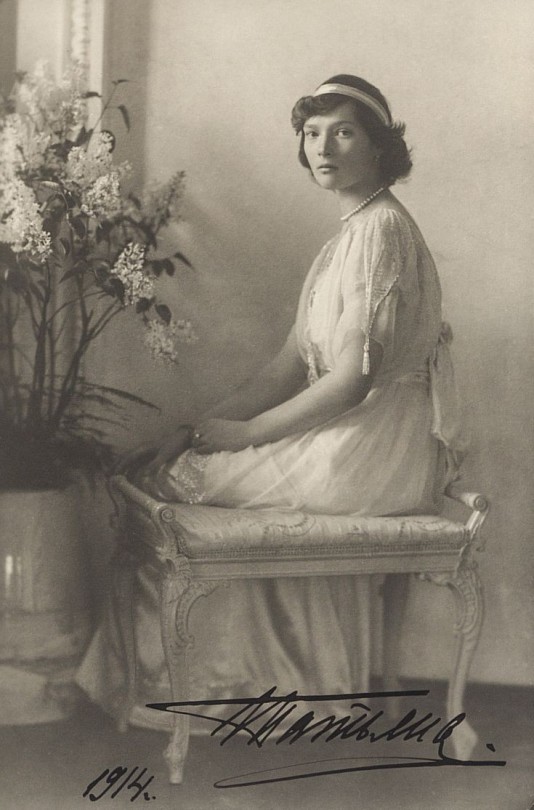
Empress Victoria of Germany
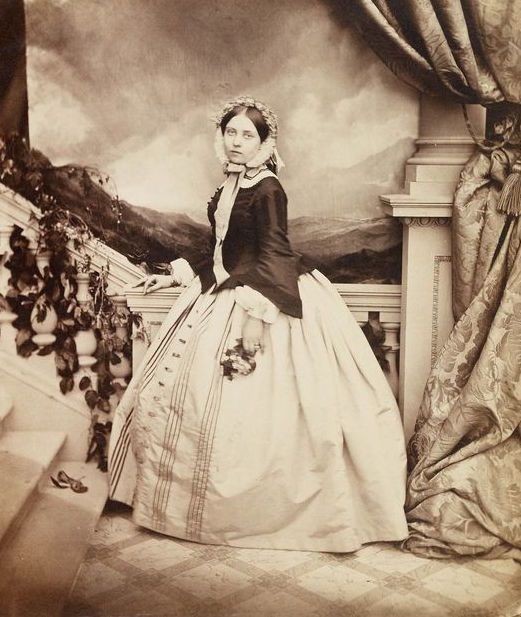
Queen Maud of Norway
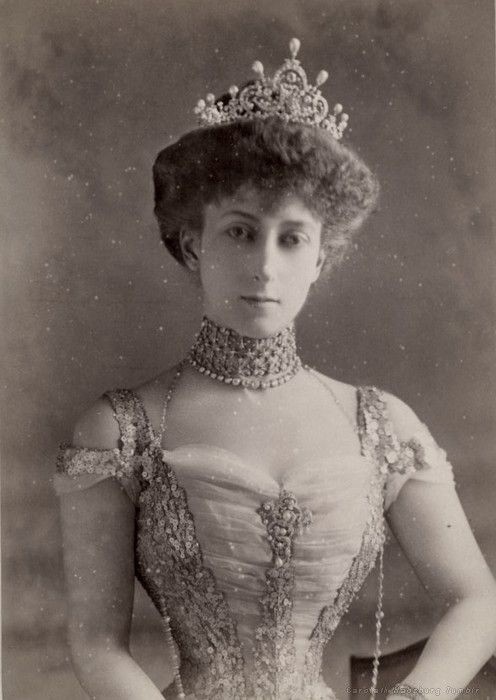
Grand Duchess Elisabeth Feodorovna
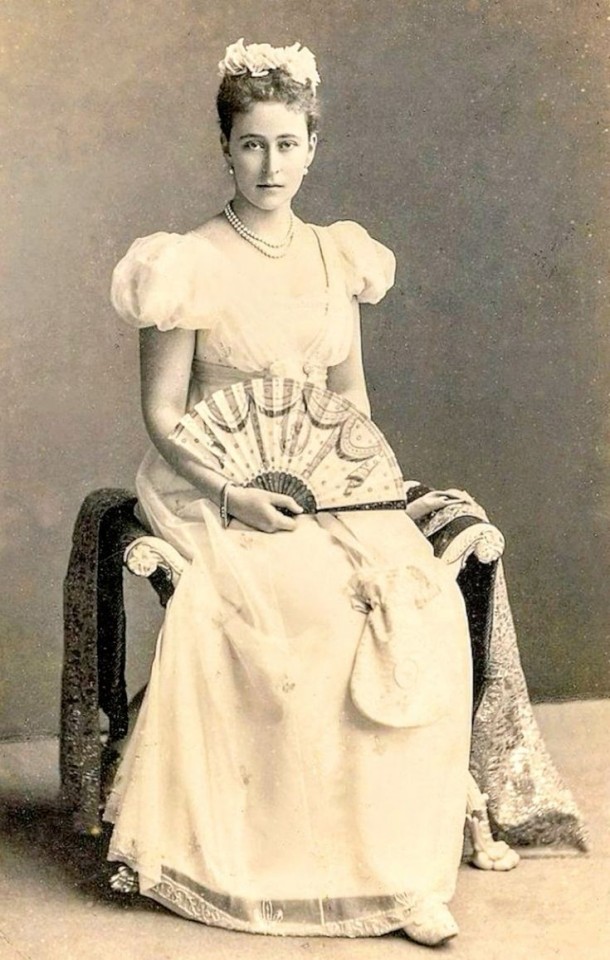
Queen Sophia of Greece
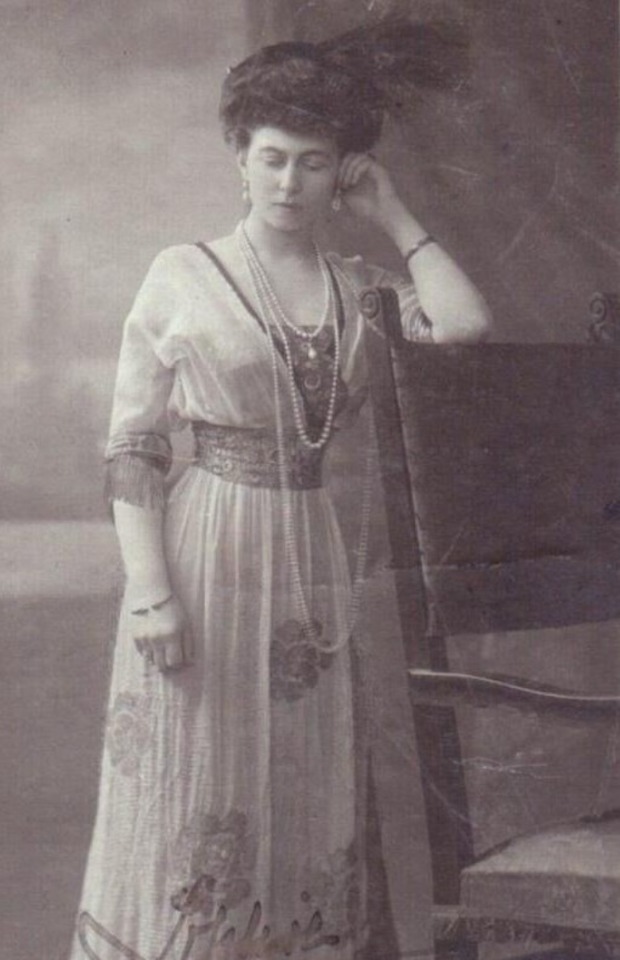
Queen Maria Sophie of the Two Siciles
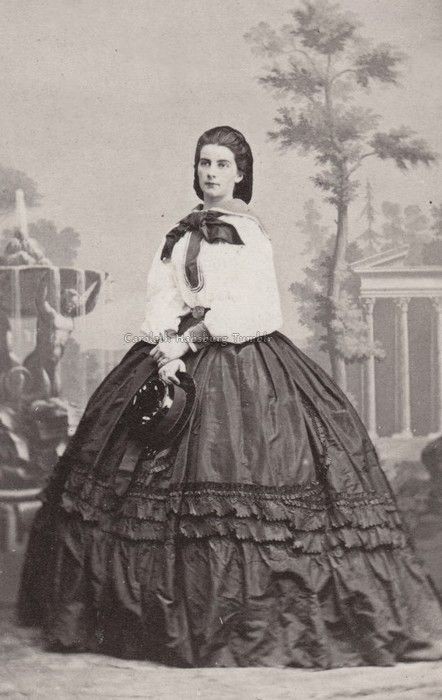
Princess Margaret
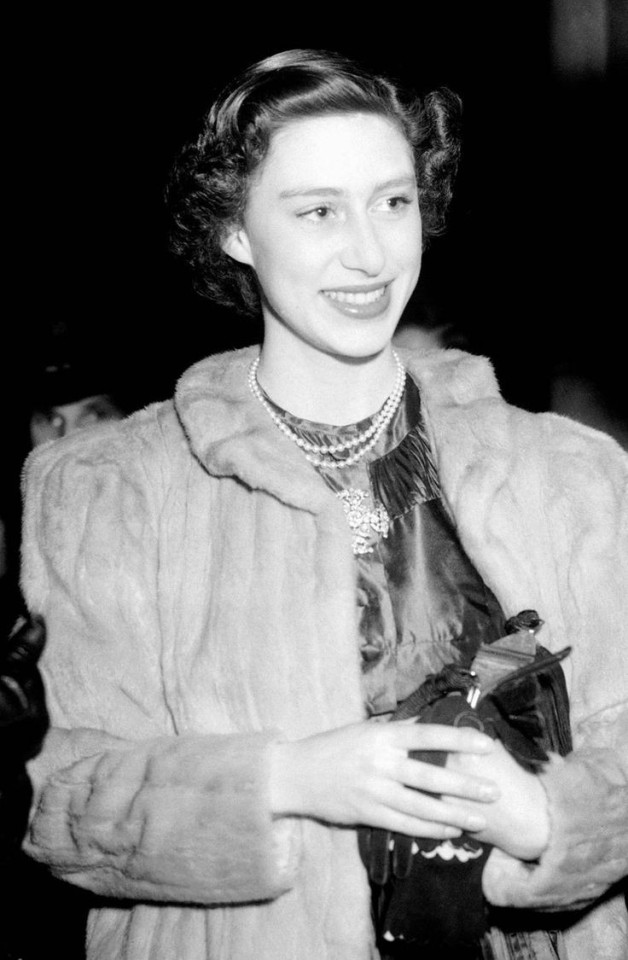
Princess Beatrice of Edinburgh, Duchess of Galliera.
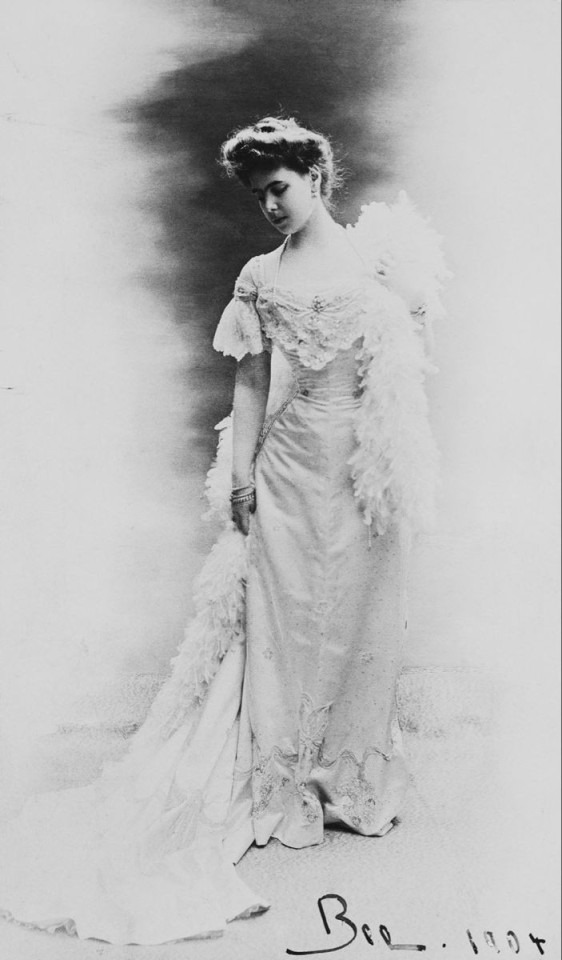
#answered ask#queen alexandra#alexandra of denmark#empress maria feodorovna#dagmar of denmark#grand duchess tatiana nikolaevna#victoria princess royal#empress victoria of germany#maud of wales#queen maud of norway#grand duchess elisabeth feodorovna#elisabeth of hesse#queen sophia of greece#princess sophia of prussia#queen marie sophie of the two sicilies#duchess marie sophie in bavaria#princess margaret#countess of snowdon#princess beatrice of edinburgh#duchess of galliera
17 notes
·
View notes
Text
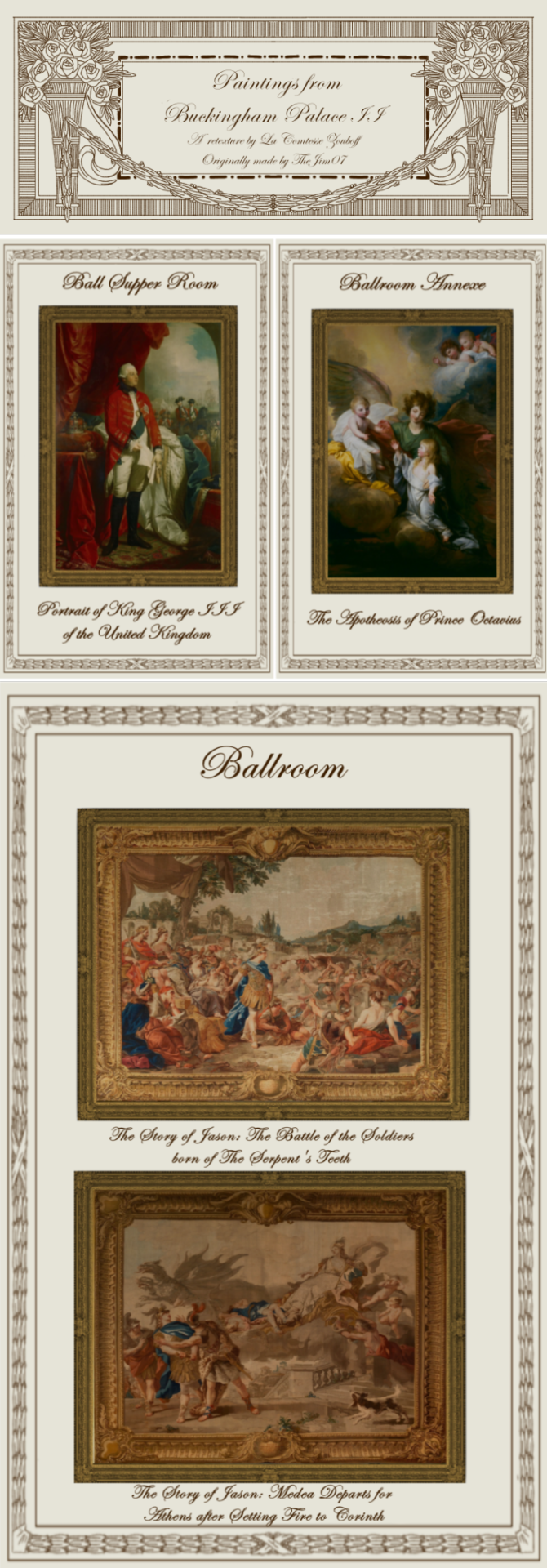
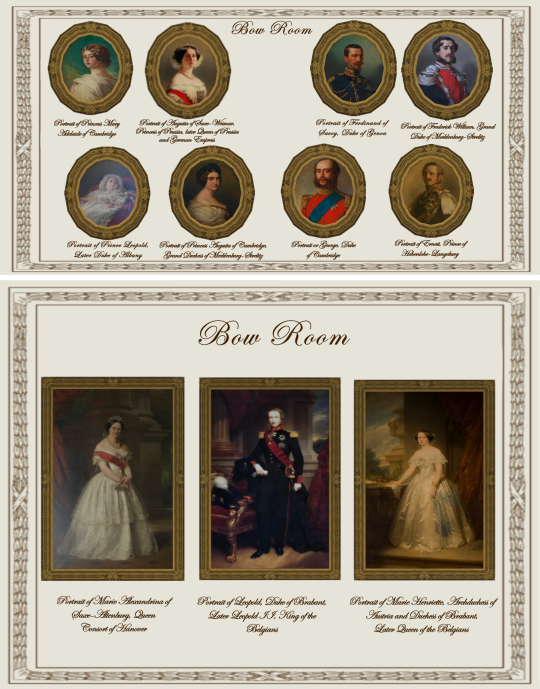
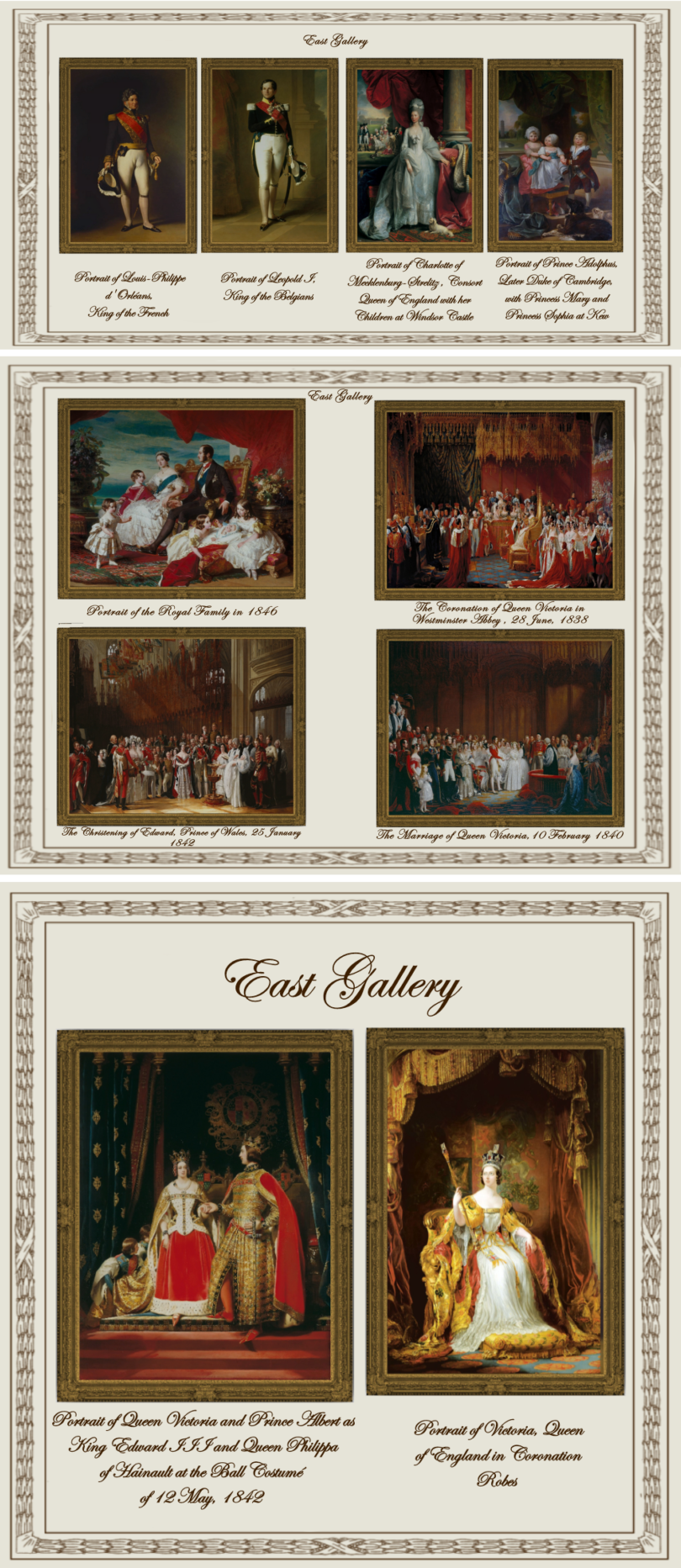
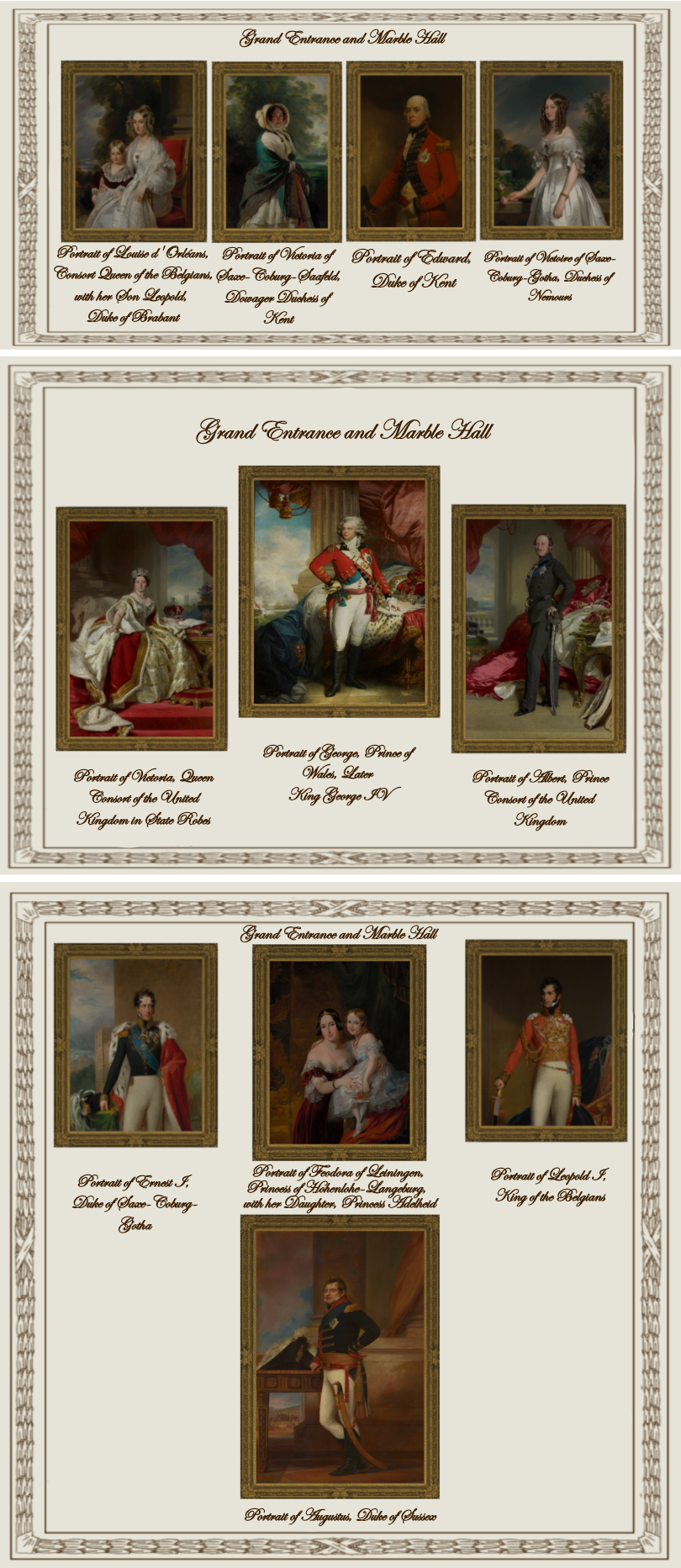

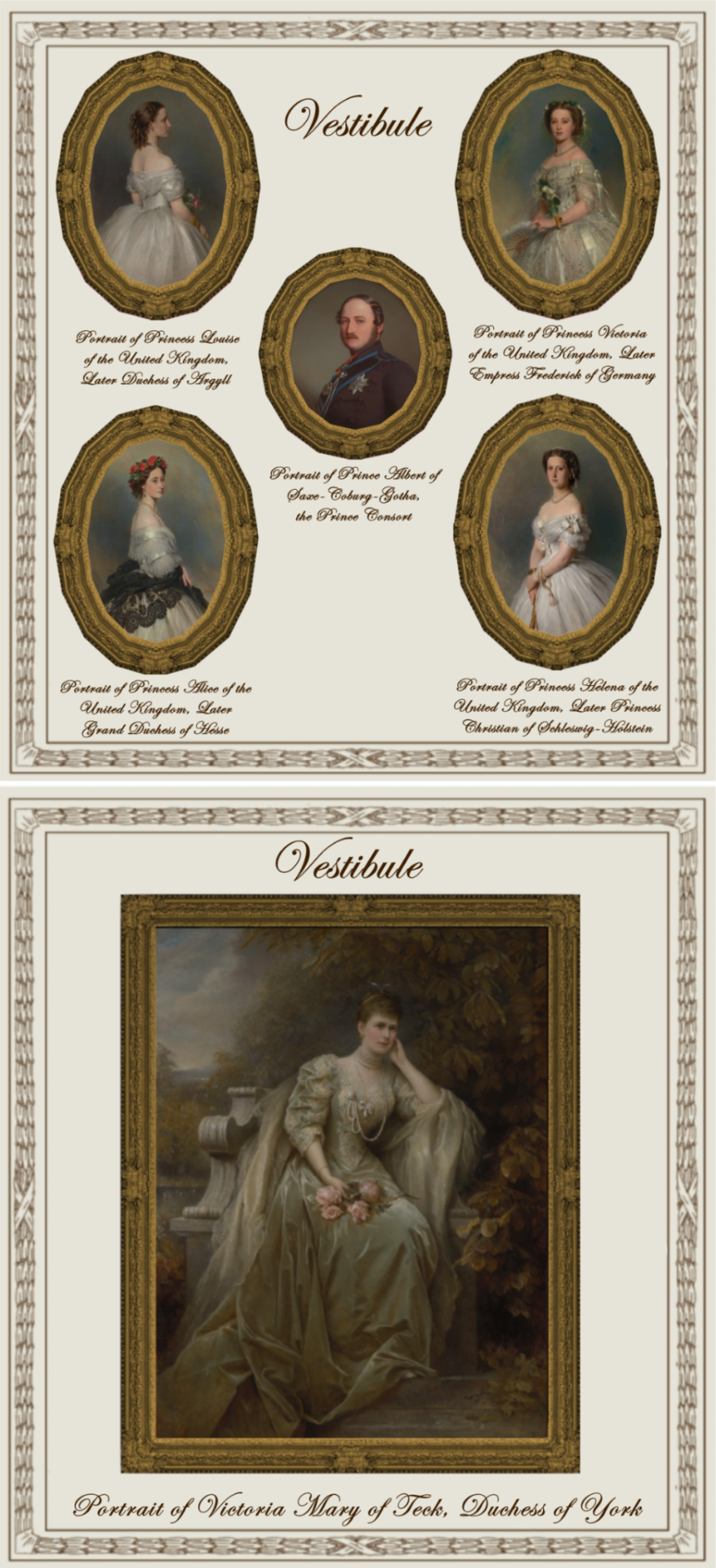


Paintings from Buckingham Palace: part II
A retexture by La Comtesse Zouboff — Original Mesh by @thejim07
Spread among 13 occupied and historic royal residences in the United Kingdom, the collection is owned by King Charles III and overseen by the Royal Collection Trust. The British monarch owns some of the collection in right of the Crown and some as a private individual. It is made up of over one million objects, including 7,000 paintings, over 150,000 works on paper, this including 30,000 watercolours and drawings, and about 450,000 photographs, as well as around 700,000 works of art, including tapestries, furniture, ceramics, textiles, carriages, weapons, armour, jewellery, clocks, musical instruments, tableware, plants, manuscripts, books, and sculptures.
Some of the buildings which house the collection, such as Hampton Court Palace, are open to the public and not lived in by the Royal Family, whilst others, such as Windsor Castle, Kensington Palace and the most remarkable of them, Buckingham Palace are both residences and open to the public.
About 3,000 objects are on loan to museums throughout the world, and many others are lent on a temporary basis to exhibitions.
-------------------------------------------------------
The second part includes paintings displayed in the Ball Supper Room, the Ballroom, the Ballroom Annexe, the Bow Room, the East Gallery, the Grand Entrance and Marble Hall, the Minister's Landing & Staircase, the Vestibule, the Chinese Dining Room and the Balcony Room.
This set contains 57 paintings and tapestries with the original frame swatches, fully recolourable. They are:
Ball Supper Room (BSR):
Portrait of King George III of the United Kingdom (Benjamin West)
Ballroom (BR):
The Story of Jason: The Battle of the Soldiers born of The Serpent's Teeth (the Gobelins)
The Story of Jason: Medea Departs for Athens after Setting Fire to Corinth (the Gobelins)
Ballroom Annexe (BAX):
The Apotheosis of Prince Octavius (Benjamin West)
Bow Room (BWR):
Portrait of Princess Mary Adelaide of Cambridge (William Corden the Younger)
Portrait of Princess Augusta of Cambridge, Grand Duchess of Mecklenburg-Strelitz (Alexander Melville)
Portrait or George, Duke of Cambridge (William Corden the Younger)
Portrait of Frederick William, Grand Duke of Mecklenburg-Strelitz (Franz Xaver Winterhalter)
Portrait of Augusta of Saxe-Weimar, Princess of Prussia, later Queen of Prussia and German Empress (Franz Xaver Winterhalter)
Portrait of Prince Leopold, Later Duke of Albany (Franz Xaver Winterhalter)
Portrait of Ernest, Prince of Hohenlohe-Langeburg (Franz Xaver Winterhalter)
Portrait of Ferdinand of Savoy, Duke of Genoa (Eliseo Sala)
Portrait of Marie Alexandrina of Saxe-Altenburg, Queen Consort of Hanover (Carl Ferdinand Sohn)
Portrait of Leopold, Duke of Brabant, Later Leopold II, King of the Belgians (Nicaise de Keyser)
Portrait of Marie Henriette, Archduchess of Austria and Duchess of Brabant, Later Queen of the Belgians (Nicaise de Keyser)
East Gallery (EG):
Portrait of Leopold I, King of the Belgians (Franz Xaver Winterhalter)
Portrait of Victoria, Queen of England in Coronation Robes (Sir George Hayter)
Portrait of Louis-Philippe d'Orléans, King of the French (Franz Xaver Winterhalter)
Portrait of Charlotte of Mecklenburg-Strelitz, Consort Queen of England with her Children at Windsor Castle (Benjamin West)
Portrait of Prince Adolphus, later Duke of Cambridge, With Princess Mary and Princess Sophia at Kew (Benjamin West)
The Coronation of Queen Victoria in Westminster Abbey, 28 June, 1838. (Sir George Hayter)
The Christening of Edward, Prince of Wales 25 January, 1842 (Sir George Hayter)
The Marriage of Queen Victoria, 10 February, 1840 (Sir George Hayter)
Portrait of the Royal Family in 1846 (Franz Xaver Winterhalter)
Portrait of Queen Victoria and Prince Albert as King Edward III and Queen Philippa of Hainault at the Ball Costumé of 12 May, 1842 (Sir Edwin Landseer)
Grand Entrance and Marble Hall (GEMH):
Portrait of Edward, Duke of Kent (John Hoppner)
Portrait of Ernest I, Duke of Saxe-Coburg-Gotha (George Dawe)
Portrait of Victoria of Saxe-Coburg-Saafeld, Dowager Duchess of Kent (Franz Xaver Winterhalter)
Portrait of Albert, Prince Consort of the United Kingdom (Franz Xaver Winterhalter)
Portrait of Victoria, Queen Consort of the United Kingdom in State Robes (Franz Xaver Winterhalter)
Portrait of Louise d'Orléans, Consort Queen of the Belgians, with her Son Leopold, Duke of Brabant (Franz Xaver Winterhalter)
Portrait of Feodora of Leiningen, Princess of Hohenlohe-Langeburg, with her Daughter, Princess Adelheid (Sir George Hayter)
Portrait of George, Prince of Wales, Later King George IV (Mather Byles Brown)
Portrait of Victoire of Saxe-Coburg-Gotha, Duchess of Nemours (Franz Xaver Winterhalter)
Portrait of Augustus, Duke of Sussex (Domenico Pellegrini)
Portrait of Leopold I, King of the Belgians (William Corden the Younger)
Minister's Landing and Staircase (MLS):
Portrait of George, Prince of Wales in Garther Robes (John Hoppner)
The Loves of the Gods: The Rape of Europa (the Gobelins)
The Loves of the Gods: The Rape of Proserpine (The Gobelins)
Vestibule (VL):
Portrait of Prince Albert of Saxe-Coburg-Gotha, the Prince Consort (Unknown Artist from the German School)
Portrait of Princess Alice of the United Kingdom, Later Grand Duchess of Hesse (Franz Xaver Winterhalter)
Portrait of Princess Helena of the United Kingdom, Later Princess Christian of Schleswig-Holstein (Franz Xaver Winterhalter)
Portrait of Princess Louise of the United Kingdom, Later Duchess of Argyll (Franz Xaver Winterhalter)
Portrait of Princess Victoria of the United Kingdom, Later Empress Frederick of Germany (Franz Xaver Winterhalter)
Portrait of Victoria Mary of Teck, Duchess of York (Edward Hughes)
Chinese Dining Room or Pavilion Breakfast Room(CDR):
Set of Four Painted Chinoiserie Wall panels I (Robert Jones)
Set of Four Painted Chinoiserie Wall panels II (Robert Jones)
Set of Four Painted Chinoiserie Wall panels III (Robert Jones)
Set of Four Painted Chinoiserie Wall panels IV (Robert Jones)
Balcony Room or Centre Room (BR):
Chinoiserie Painted Panel I (Robert Jones)
Chinoiserie Painted Panel II (Robert Jones)
Chinoiserie Painted Panel III (Robert Jones)
Chinoiserie Painted Panel IV (Robert Jones)
EXTRAS! (E):
I decided to add the rest of the tapestries from the story of Jason (wich hangs in the Grand Reception Room at Windsor Castle) and (with Jim's permission) added the original mesh for paintings number 2,3,4 & 5 from the Vestibule (seen here and here) wich was never published. These items are:
The Story of Jason: Jason Pledges his Faith to Medea (the Gobelins)
The Story of Jason: Jason Marries Glauce, Daughter of Creon, King of Thebes (the Gobelins)
The Story of Jason: The Capture of the Golden Fleece (the Gobelins)
The Story of Jason: The Poisoning of Glauce and Creon by Medea's Magic Robe (the Gobelins)
Sea Melodies (Herbert James Draper) (made by TheJim07)
-------------------------------------------------------
Found under decor > paintings for:
500§ (BWR: 1,2,3,4,5,6, & 8 |VL: 1)
570§ (VL: 2,3,4 & 5 |E: 5)
1850§ (GEMH: 1 & 3)
2090§ (GEMH: 2,6,7, 9 & 11)
3560§ (GEMH: 4,5 & 10 |BSR: 1 |EG: 1,2,3,4 & 5 |MLS: 1 |BAX: 1)
3900§ (CDR: 1,2,3 & 4 |BR: 1,2,3 & 4 |EG: 10 |VL: 6 |GEMH: 8)
4470§ (MLS: 2 |E: 1)
6520§ (BR 1 & 2| MLS: 3 |EG: 6,7,8 & 9 |BR: 1 & 2 |E: 2,3 & 4)
Retextured from:
"Saint Mary Magdalene" (BWR: 1,2,3,4,5,6, & 8 |VL: 1) found here.
"Sea Melodies" (VL: 2,3,4 & 5 |E: 5)
"The virgin of the Rosary" (GEMH: 1 & 3) found here.
"Length Portrait of Mrs.D" (GEMH: 4,5 & 10 |BSR: 1 |EG: 1,2,3,4 & 5 |MLS: 1 |BAX: 1) found here
"Portrait of Maria Theresa of Austria and her Son, le Grand Dauphin" (CDR: 1,2,3 & 4 |BR: 1,2,3 & 4 |EG: 10 |VL: 6 |GEMH: 8) found here
"Sacrifice to Jupiter" (MLS: 2 |E: 1) found here
"Vulcan's Forge" (BR 1 & 2| MLS: 3 |EG: 6,7,8 & 9 |BR: 1 & 2 |E: 2,3 & 4) found here
(you can just search for "Buckingham Palace" using the catalog search mod to find the entire set much easier!)
Disclaimer!
Some paintings in the previews look blurry but in the game they're very high definition, it's just because I had to add multiple preview pictures in one picture to be able to upload them all! Also sizes shown in previews are not accurate to the objects' actual sizes in most cases.
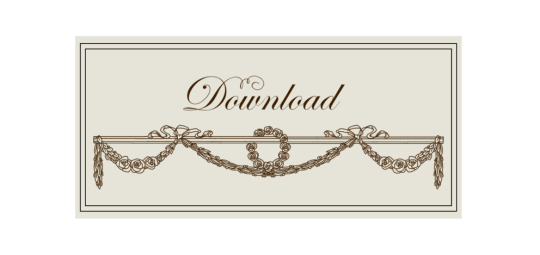
Drive
(Sims3pack | Package)
(Useful tags below)
@joojconverts @ts3history @ts3historicalccfinds @deniisu-sims @katsujiiccfinds @gifappels-stuff
-------------------------------------------------------
#the sims 3#ts3#sims 3#s3cc#sims 3 cc#sims 3 download#sims 3 decor#edwardian#victorian#regency#georgian#buckingham#buckingham palace#wall decor#sims 3 free cc#large pack#this was exhausting
71 notes
·
View notes
Text

"Three children were born after me, Waldemar, Sophie and Margaret. Sophie is now Queen Sophia of Greece. She was always dignified and queenly, and I quite well remember how one of our first nurses used to say: “Mark my words, Sophie will be a queen one day.” Margaret, who is six years younger than myself, is the present Landgrafin of Hesse. remember the day when she was born and lying in her cradle -I wanted to take her into my bed.
My mother, with her many children, was always active and very busy. She was essentially a womanly woman, and was wholly devoted to her family. Her day began at seven. Every morning at that hour whether at the Palace in Berlin or at Potsdam, Sophie, Margaret and myself went to our parents’ rooms whilst they were having their cup of tea and toast in bed. Sometimes, seated on their bed, we used to entertain them with little rhymes we had learnt, one I remember being “John Gilpin”. My parents began their official duties before eight o’clock in the morning, and, as can well be imagined, my mother, as wife of a Crown Prince who afterwards became Emperor, had the day crowded with work of a formal and important character. But she never neglected her children. Every moment that she could spare away from the various duties which devolved upon her was spent with us. She carefully supervised and watched our upbringing both in the nursery and in the schoolroom. My mother being English, it was natural that our first nurse should be an Englishwoman. She was Mrs. (Georgina) Hobbs, who first went to Germany as a maid to my mother when she married. Afterwards she became chief nurse. She was a jolly buxom woman, and we were all very fond of her. Hobby, or Hobbsy, as she was called, taught us English, and our nurseries, I was told later, were arranged in English fashion, and modelled on the nurseries of Queen Victoria. Then we reached the years when lessons had to start, our days were very full. Lessons would begin at eight o'clock. At nine we all breakfasted together with our parents. The rest of the day would be portioned out, chiefly in lessons, or in exercise of one kind or another. According to the time of the year we had skating, swimming, or rowing; in addition to riding, gymnastics, dancing and tennis. We had a great many different teachers, all of course most carefully chosen, for both my parents were intent on giving us a very thorough education and spared no pains in getting us the best tuition possible.
My favourite governess was a Miss Byneg. I was greatly attached to her, and she was like a second mother to me, very kind and patient. I was a difficult pupil, far more interested in outdoor life and sport of every kind than in study. We were a natural jolly crowd of children, brought up simply but carefully, and our governesses and masters became our friends. We gave them pet names or nicknames, and they took it allin good part, and, I think, rather liked it. Miss Byng was “Minnie” to us. She petted me a great deal, and used to call me “Birdie”, and names of that kind. Our German foverness, Fratilein Poppe — soon known, of course, as Poppy — was great fun. We all got on very well with her. When lessons were finished and we went out riding with our riding master, Fraulein Poppe would usually accompany us. She was very musical and fond of singing. She it was who gave me my first singing lessons, teaching me delightful German nursery songs among others. I used to love “Als unser Mops ein Mépschen war, da konnt, er lustig sein” and “Und bald gras, ich am Neckar, bald gras, ich am Rhein.” My brother Henry, a few years older than myself, used to come along to the schoolroom and join us in our singing lessons. They were some of the most enjoyable lessons we had. “Aile Végel sind schon da, aile Vogel aile” and “Bienchen sum, sum, herum” were great favourites with us all".
Princess Victoria of Prussia "My Memoirs"
16 notes
·
View notes
Text
Charlotte & Sophie! 😍 >>>>>>
The 8 children of Emperor Fredrick III of Germany and Victoria Princess Royal (edit)
Wilhelm, Charlotte, Henry, Sigismund, Viktoria, Waldemar, Sophia, Margaret
(made by me using iMovie)
#kaiser wilhelm ii#princess charlotte of prussia#princess charlotte duchess of saxe-meiningen#prince heinrich of prussia#prince henry of prussia#prince sigismund of prussia#princess viktoria of prussia#princess viktoria of schaumburg-lippe#prince waldemar of prussia#queen sophia of greece#princess sophia of prussia#princess margaret of prussia#landgravine of hesse#hohenzollern#prussian royal family#not my edit
27 notes
·
View notes
Text







Royal Deaths, 22nd September.
1093 - Olaf III, King of Norway.
1408 - Johannes VII Palaeologus, Byzantine Emperor
1520 - Selim I, the Grim, Sultan of the Ottoman Empire.
1531 - Louise of Savoy, mother and regent for King Francis I, dies of the plague at 55.
1828 - Shaka, South African Zulu king, founder of the Zulu nation, murdered.
1840 - Princess Augusta Sophia of the United Kingdom, daughter of King George III and Queen Charlotte.
1948 - Prince Adalbert of Prussia, son of Wilhelm II, German Emperor and King of Prussia.
11 notes
·
View notes
Text
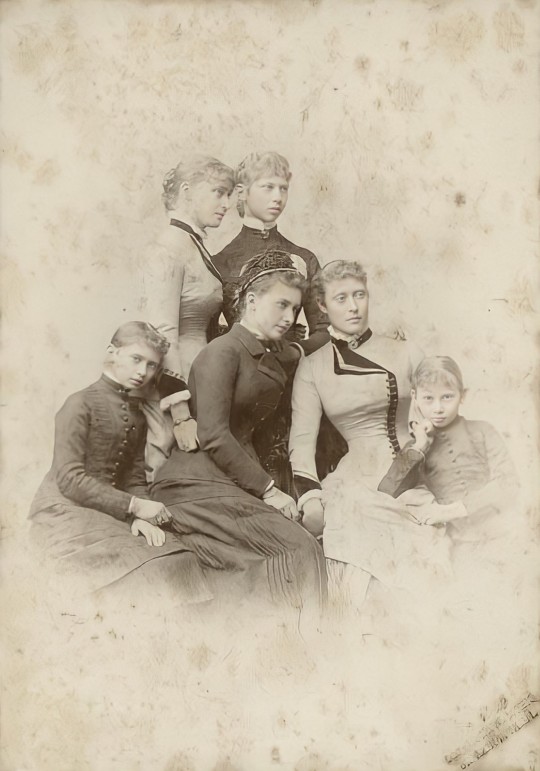
Photograph of Princesses Elisabeth and Victoria with their maternal cousins, Princesses Sophia, Viktoria and Margaret of Prussia and Princess Charlotte, Hereditary Duchess of Saxe-Meiningen, 1882.
#victoria of hesse#victoria of hesse and by rhine#elizabeth of hesse#elizabeth feodorovna#elizaveta feodorovna#princess alice#princess alice of the united kingdom#queen victoria#victoria#prince albert#victorian#victorian era#germany#hesse#rhine#battenberg#mountbatten#russia#princess#marchioness#grand duchess#royal#royalty#history#portrait#photo#charlotte of prussia#viktoria of prussia#sophia of prussia#margaret of prussia
81 notes
·
View notes
Note
Hi! Do you know why Vicky didn't have a good relationship with Charlotte? I know she didn't with Wilhelm mainly because of his disability however what was the issue with Charlotte?
Hello! So I think you need to keep these things in mind before you start analyzing the two’s relationship. For one thing, back in the day, good kind relationships between royal parents and their children were quite rare. Most royal women put their children in the care of nannies and often didn’t see them as their own flesh and blood. But don’t get me wrong, some royals had AMAZING relationships with their children, but this was not always the case.
Victoria Princess Royal married Crown Prince Fredrick of Prussia when she was only 17 years old (that was quite young, even for her time!) and she was still very much a young girl. Also she didn’t have the best relationship with her mother because Queen Victoria was more in love with her husband Albert than her children and she wasn’t the best figure to look up to as a mother. She had her first child, Kaiser Wilhelm II when she was only 19 years old and she had Charlotte when she was 20. She was quite inexperienced as a mother and the only motherly figure that she could look up to was her own mother. She didn’t have any other person to influence her motherly abilities. Also just a year after she had Charlotte, her father died unexpectedly which left a big whole in her heart. Vicky idolized her father and was deeply crushed by his death. Queen Victoria also was deeply shattered by this loss and became even colder to her children (she wasn’t cruel, but she was very distant and often ignored their troubles and said that they would never compare to her loss of her “beloved Albert”).
As you mentioned above, Kaiser Wilhelm did have a disability and yes that affected his relationship with his mother. Vicky had a difficult birth with Wilhelm because he was a breech baby (he was born feet first instead of head). The birth required forceps to get the baby out and they had to break Wilhelm’s left shoulder too. He came out not breathing but the doctors gave him a good slap and then he started to cry indicating that he was alive. The doctors didn’t understand that breaking the child’s shoulder and not fixing it immediately would cause a defective left arm for the rest of Wilhelm’s life. Back then, having a “crippled” heir to the throne was out of the question. Vicky and Fritz (Fredrick’s nickname) approved countless dangerous and abusive “medical treatments” that would supposedly help with his disability. The “treatments” often involved electro-therapy or wrapping dead animals to the paralyzed arm. This never fixed Wilhelm’s disability and only left him deeply traumatized. He blamed his mother for this for the rest of his life and never forgives her for not standing up for him. In the next four years, Vicky had two more children, Henry and Sigismund. She was starting to gain some more motherly abilities and she was very happy with her family. In 1866, Vicky’s youngest son Sigismund was sick with meningitis. All of the available doctors were sent to the front because of the Austro-Prussian war. Nobody was able to treat little Siggi and poor Vicky had to just sit and watch him suffer and eventually die at the age of almost 2 years old. This was a devastating blow for Vicky as Siggi was (and I hate to say it) her favorite child. After this devastating blow, Vicky finally understood what it meant to be a truly devoted mother. The tables really changed and after that, she was A LOT more devoted to her youngest children Victoria, Waldemar, Sophia, and Margaret.
But Vicky! You need to remember that you had three other children who have been lacking in a mothers love and devotion! But sadly, she did forget. The way I interpret this is that I think Vicky felt ashamed that she didn’t love her eldest children enough so she just felt like it could never be fixed. I think she really did love them, but she felt like it would never be the same as the younger children’s love. This resulted in three children whose childhood wasn’t the happiest. Henry didn’t seem to mind (and if he did then he probably would’ve covered it up because he seemed to respect and love both of his parents despite the lack of devotion), but for Charlotte and Wilhelm, it was a completely different story. They both had very different personalities from their other siblings. They were very emotional and they needed a motherly figure in their life which they lacked in very much.
Looking into Charlotte specifically, she always felt like, in her childhood, she never got what she needed. It left her very emotionally distressed and lonely. She always felt this way, even when she was an adult. She married, even had a child (Feodora) and still felt like nothing was enough for her. Because she lacked in any motherly experiences, she treated her only daughter, Feodora, terribly. Instead of caring for her daughter and loving her like any other would, she just went out partying instead. She was severely depressed and some people suspected that she had the genetic condition Porphyria (which her Great-Great Grandfather King George III had, which led him to go mad and eventually die.).
In conclusion, Charlotte did not have the best relationship with her mother, and it scarred her for life.
Thank you for asking!!!
#this is the ultimate ramble lol#answered ask#princess charlotte of prussia#princess charlotte#prussian royal family#victoria princess royal#crown princess victoria of prussia#empress Victoria of germany
26 notes
·
View notes
Text
It really doesn't matter in the grand scheme of things but something I always found ??? about the Queen Charlotte Bridgerton series is the refusal to engage with why Charlotte and George's daughters were so late to marry and, yeah, it was partially Charlotte needing her daughters as emotional crutches when George completely lost his mind but also George's sisters and aunts were beaten abused and humiliated by their husbands and yes that really did colour his engagement in discussions for potential matches.
His aunt Mary was frequently beaten in Hesse, his sister Caroline Matilda's story in Denmark was so bad she was dead by 23 and his great aunt Sophia Dorothea in Prussia once watched her daughter nearly be murdered by her father during one of his rages to the point where it was the servants dragging him off her, not to mention her repeatedly trying and failing to protect her son from his father too. These were well known and publicised moments, these were not secrets. People knew.
So like... British princesses did not do well on the continent and George knew that was was extremely cautious about where he would be sending his daughters. This is the guy after-all who was known for being rather out of step for how much he enjoyed being a father.
I know Bridgerton is dumb fluff but it's still really teeth grinding in its erasure of George's caution when it came to safeguarding his daughters before he became incapable of making arrangements. And that in itself led to them being taken advantage by older men in their households because they were the only men the girls knew. They never stood a chance.
That's more interesting and heartbreaking than the girls meekly saying they wanted to stay with their mum to be her personal punching bags. Charlotte did need her daughters, and they resented her for it and turned to less than stellar men offering them a way out. Not the other way around. George loved the girls and had seen his own family be abused and beaten. His over-protectiveness led to them being taken advantage of.
Idk. This is just a ramble, but giving the daughter's this selfless motivation to stick by their mother when they had well and truly been failed by their parents (never intentionally!!) I guess makes for a less complicated tv story.
#the system was broken the only choice was being abused by some german lord or have some thirty year older cavalry soldier creep on you#the series fixated on a sympathetic depiction of george's illness and the strain on charlotte (good good)#but did not extend that sympathy to their children (bad bad) - *especially* the girls#esp leaving out how george iv was often the *only* guy in his sister's corners fighting for them and yet he too was a horrid husband and#IT HAS LAYERS#ofc william and edward get their little humanising moments because yeah william and adelaide were genuinely in love#and yeah edward and victoria would one day pop out queen vic#(and we conveniently leave out there were other cousins born before her because hey it's queen vic who cares about the cambridgeses)#but the girls???? oh no save one line about miscarriages no moment in the series for what was done to you#and it's elizabeth that says it and elizabeth wasn't even MARRIED until her late forties#it's eldest daughter (also) Charlotte that went through that not Elizabeth and ooooooo I shouldn't care
5 notes
·
View notes
Text

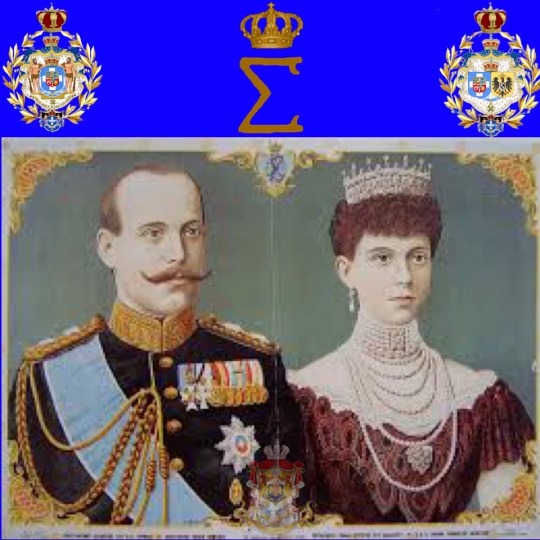




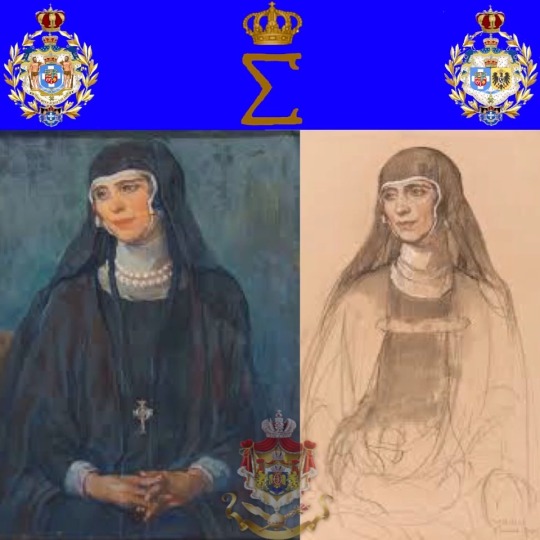

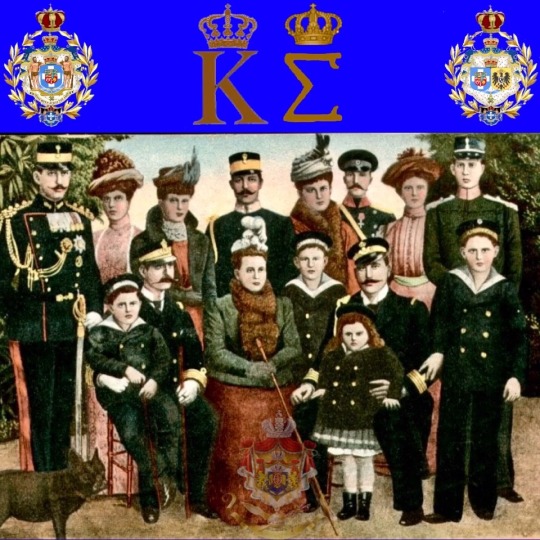
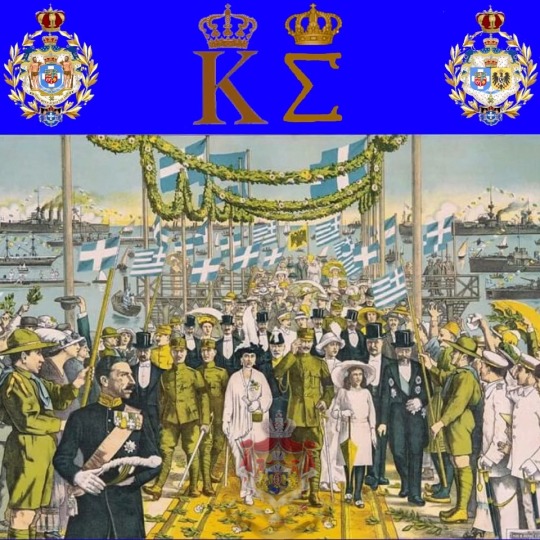
In the 14th of June was 153 years since the birth of HM Queen Sofia of Hellenes Princess of Prussia
Sophia of Prussia (Sophie Dorothea Ulrike Alice, )(14 June 1870 – 13 January 1932) was Queen of Greece from 1913 to 1917 and from 1920 to 1922 as the wife of King Constantine I.
A member of the House of Hohenzollern and child of Frederick III, German Emperor, Sophia received a liberal and Anglophile education, under the supervision of her mother Victoria, Princess Royal. In 1889, less than a year after the death of her father, she married her third cousin Constantine, heir apparent to the Greek throne. After a difficult period of adaptation in her new country, Sophia gave birth to six children and became involved in the assistance to the poor, following in the footsteps of her mother-in-law, Queen Olga. However, it was during the wars which Greece faced during the end of the 19th and the beginning of the 20th century that Sophia showed the most social activity: she founded field hospitals, oversaw the training of Greek nurses, and treated wounded soldiers.
However, Sophia was hardly rewarded for her actions, even after her grandmother Queen Victoria decorated her with the Royal Red Cross after the Thirty Days' War: the Greeks criticized her links with Germany. Her eldest brother, German Emperor William II, was indeed an ally of the Ottoman Empire and openly opposed the construction of the Megali Idea, which could establish a Greek state that would encompass all ethnic Greek-inhabited areas. During World War I, the blood ties between Sophia and the Emperor also aroused the suspicion of the Triple Entente, which criticized Constantine I for his neutrality in the conflict.
After imposing a blockade of Greece and supporting the rebel government of Eleftherios Venizelos, causing the National Schism, France and its allies deposed Constantine in June 1917. Sophia and her family then went into exile in Switzerland. Sophia's second son, Alexander, replaced his father on the throne. At the same time, Greece entered the war alongside the Triple Entente, which allowed it to grow considerably. After the outbreak of the Greco-Turkish War in 1919 and the untimely death of Alexander the following year, the Venizelists abandoned power, allowing the royal family to return to Athens. However, the defeat of the Greek army against the Turkish troops of Mustafa Kemal forced Constantine to abdicate in 1922, at which point his eldest son became King George II. Sophia and her family were then forced to a new exile, and settled in Italy, where Constantine died one year later, in 1923. With the proclamation of the Republic in Athens the following year, Sophia spent her last years alongside her family, before dying of cancer in Germany in 1932 at the age of 61.
Sophia's body was transferred to the castle of Friedrichshof, where she rested a few days before being sent to the Russian Church in Florence, where she was buried alongside her husband and mother-in-law. They stayed there for four years until the restoration of George II on the Greek throne in 1935.
After his restoration on the Greek throne, George II organized the repatriation of the remains of members of his family who died in exile. An important religious ceremony that brought together, for six days in November 1936, all members of the royal family still alive. Sophia's body was buried at the royal burial ground at Tatoi Palace, where she still rests today
Στης 14 Ιουνίου συμπληρώθηκαν 153 χρόνια από τη γέννηση της Α.Μ. Βασίλισσας Σοφίας των Ελλήνων Πριγκίπισσα της Πρωσίας
Η Σοφία της Πρωσίας (Sophie Dorothea Ulrike Alice, ) (14 Ιουνίου 1870 – 13 Ιανουαρίου 1932) ήταν βασίλισσα της Ελλάδας από το 1913 έως το 1917 και από το 1920 έως το 1922 ως σύζυγος του βασιλιά Κωνσταντίνου Α΄.
Μέλος του Οίκου των Χοεντσόλερν και παιδί του Φρειδερίκου Γ', Γερμανού Αυτοκράτορα, η Σοφία έλαβε φιλελεύθερη και αγγλόφιλη εκπαίδευση, υπό την επίβλεψη της μητέρας της Βικτώριας,
Βασιλικης Πριγκίπισσας(Τίτλος που κατέχει η μεγαλύτερη κόρη του εκάστοτε Βρετανού Μονάρχη εκτός αν αυτή είναι η Διάδοχος πχ Βασίλισσα Ελισσαβετ Β´) .
Το 1889, λιγότερο από ένα χρόνο μετά τον θάνατο του πατέρα της, παντρεύτηκε τον τρίτο ξάδερφό της Κωνσταντίνο, προφανή διάδοχο του ελληνικού θρόνου. Μετά από μια δύσκολη περίοδο προσαρμογής στη νέα της χώρα, η Σοφία γέννησε έξι παιδιά και ασχολήθηκε με τη βοήθεια προς τους φτωχούς, ακολουθώντας τα βήματα της πεθεράς της, βασίλισσας Όλγας. Ωστόσο, κατά τη διάρκεια των πολέμων που αντιμετώπισε η Ελλάδα στα τέλη του 19ου και στις αρχές του 20ού αιώνα, η Σοφία έδειξε την πιο κοινωνική δραστηριότητα: ίδρυσε νοσοκομεία υπαίθρου, επέβλεπε την εκπαίδευση των Ελλήνων νοσοκόμων και περιέθαλψε τραυματίες στρατιώτες.
Ωστόσο, η Σοφία δύσκολα ανταμείφθηκε για τις ενέργειές της, ακόμη και όταν η γιαγιά της Βασίλισσα Βικτώρια τη στόλισε με τον Βασιλικό Ερυθρό Σταυρό μετά τον Τριακονταήμερο Πόλεμο: οι Έλληνες επέκριναν τους δεσμούς της με τη Γερμανία. Ο μεγαλύτερος αδελφός της, ο Γερμανός Αυτοκράτορας Γουλιέλμος Β', ήταν πράγματι σύμμαχος της Οθωμανικής Αυτοκρατορίας και αντιτάχθηκε ανοιχτά στην οικοδόμηση της Μεγάλης Ιδέας, η οποία θα μπορούσε να ιδρύσει ένα ελληνικό κράτος που θα περιλάμβανε όλες τις εθνικές ελληνοκατοικημένες περιοχές. Κατά τον Α' Παγκόσμιο Πόλεμο, οι δεσμοί αίματος μεταξύ της Σοφίας και του Αυτοκράτορα προκάλεσαν επίσης την υποψία της Τριπλής Αντάντ, η οποία επέκρινε τον Κωνσταντίνο Α' για την ουδετερότητά του στη σύγκρουση.
Αφού επέβαλε αποκλεισμό της Ελλάδας και στήριξε την ανταρτική κυβέρνηση του Ελευθέριου Βενιζέλου, προκαλώντας το Εθνικό Σχίσμα, η Γαλλία και οι σύμμαχοί της καθαίρεσαν τον Κωνσταντίνο τον Ιούνιο του 1917. Η Σοφία και η οικογένειά της στη συνέχεια εξορίστηκαν στην Ελβετία. Ο δεύτερος γιος της Σοφίας, ο Αλέξανδρος, αντικατέστησε τον πατέρα του στο θρόνο. Ταυτόχρονα, η Ελλάδα μπήκε στον πόλεμο δίπλα στην Τριπλή Αντάντ, γεγονός που της επέτρεψε να αναπτυχθεί αρκετά. Μετά το ξέσπασμα του ελληνοτουρκικού πολέμου το 1919 και τον πρόωρο θάνατο του Αλέξανδρου τον επόμενο χρόνο, οι βενιζελικοί εγκατέλειψαν την εξουσία, επιτρέποντας στη βασιλική οικογένεια να επιστρέψει στην Αθήνα. Ωστόσο, η ήττα του ελληνικού στρατού έναντι των τουρκικών στρατευμάτων του Μουσταφά Κεμάλ ανάγκασε τον Κωνσταντίνο να παραιτηθεί το 1922, οπότε ο μεγαλύτερος γιος του έγινε βασιλιάς Γεώργιος Β'. Στη συνέχεια, η Σοφία και η οικογένειά της αναγκάστηκαν σε νέα εξορία και εγκαταστάθηκαν στην Ιταλία, όπου ο Κωνσταντίνος πέθανε ένα χρόνο αργότερα, το 1923. Με την ανακήρυξη της Δημοκρατίας στην Αθήνα τον επόμενο χρόνο, η Σοφία πέρασε τα τελευταία της χρόνια δίπλα στην οικογένειά της, πριν πεθάνει του καρκίνου στη Γερμανία το 1932 σε ηλικία 61 ετών.
Η σορός της Σοφίας μεταφέρθηκε στο κάστρο Friedrichshof, όπου αναπαύθηκε λίγες μέρες πριν σταλεί στη Ρωσική Εκκλησία στη Φλωρεντία, όπου τάφηκε δίπλα στον σύζυγο και την πεθερά της. Έμειναν εκεί για τέσσερα χρόνια μέχρι την αποκατάσταση του Γεωργίου Β΄ στον ελληνικό θρόνο το 1935.
Μετά την αποκατάστασή του στον ελληνικό θρόνο, ο Γεώργιος Β' οργάνωσε τον επαναπατρισμό των λειψάνων των μελών της οικογένειάς του που πέθαναν στην εξορία. Μια σημαντική θρησκευτική τελετή που συγκέντρωσε, για έξι ημέρες τον Νοέμβριο του 1936, όλα τα μέλη της βασιλικής οικογένειας εν ζωή. Η σορός της Σοφίας ετάφη στο βασιλικό ταφικό μνημείο στο Τατόι, όπου αναπαύεται μέχρι σήμερα.
#kingconstantine#danishroyalfamily#crownprincepavlos#queenannemarie#greek royal family#house of romanov#greekroyals#crownprincessmariechantal#danishroyals#princeconstantinealexios
2 notes
·
View notes